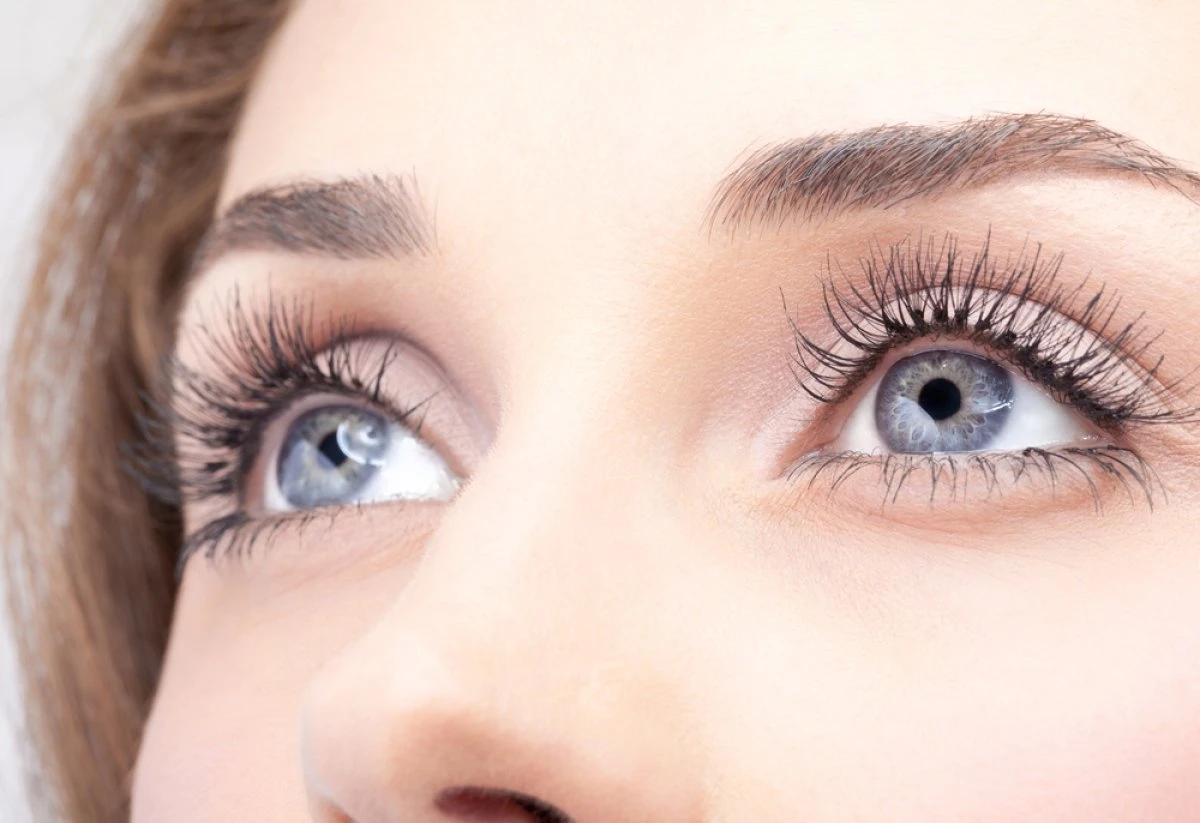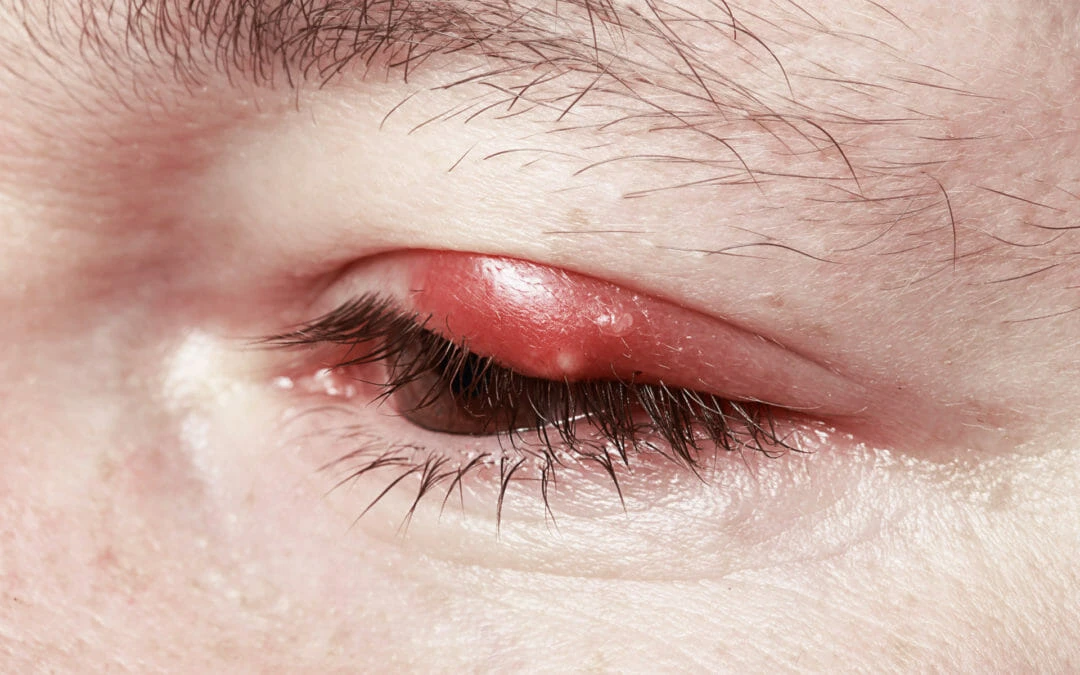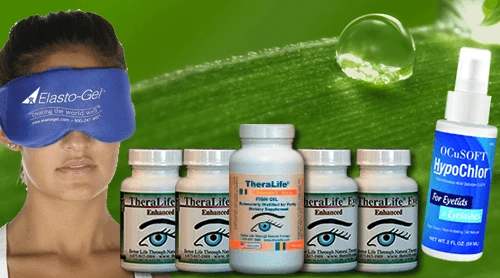Why do you have recurrent chalazion?
A chalazion is a small bump in the eyelid caused by a blockage of a tiny oil gland.
Chalazion surgery involves removal of a chalazion, the soft swollen bump which is typically found inside the upper lid. The upper is usually more frequent. Chalazia is a swollen gland located inside the eye’ s eye called the meibomian gland that causes inflammation and irritation to the eyelids. Chalazion surgery may be avoided as most chalazias disappear without treatment for days or even weeks after they have begun. However, a surgeon may need to remove the abrasive cells in order to prevent the development of a permanent abrasion.
To prevent recurrent chalazion after surgery is to treat dry eyes, and clogged meibomian oil glands, the root causes of chalazion.
How To Stop Chalazion Recurrence – Theralife
TheraLife All In One Dry Eye Starter Kit To Stop Chalazion!
Add To Cart
1. TheraLife Eye Capsules – restore and revive tear production
2. Omega – 3 Fish Oil- anti-inflammatory, lubrication to thicken tears
3. Hot Compress to melt clogging from oil glands
4. Avenova Eyelid Cleanser – eyelid hygiene vital for dry eye recovery
Add To Cart
Why Does Theralife Work?
Theralife stops chalazion recurrence by treating dry eyes, blepharitis and Meibomian Gland Dysfunction simultaneously. Treating from inside out. No more drops.
- Theralife Eye capsules – to restore your own tear production
- OMega 3 fish oil- anti-inflammatory and provide lubrication to thicken tears and provide comfort
- Hot compress – to melt the meibomian oil gland clogs
- Eyelid cleanser – for eyelid hygiene, get rid of blepharitis and prevent bacterial re-population.
What is in TheraLife Eye capsules
Customer Success Stories
No more chalazion and styes
After a summer of many large styes a few years ago, I was diagnosed w/ Blepharitis. I started to read about natural cures & found the Theralife site. I’ve been using the Enhanced Eye for a few years now & coupled with diligent lid cleansing, I have had only 2 styes in 2 years.. Dr Yang is so responsive & ready to help…. I happy to have found a natural way to deal w/ this condition to keep in check.
E S – United States
How To Stop Chalazion Recurrence – Theralife
TheraLife All In One Dry Eye Starter Kit To Stop Chalazion!
Add To CartIntroduction
Chalazion is an eyelid inflammation resulting from the plugged meibomian gland that clogs the meibomian.
A chalazion is caused by a blocked duct in one of the meibomian glands. These glands are located in the eyelid directly behind the eyelashes. They produce a thin, oily fluid that lubricates the eye.
In complete chalazion drainage may cause granular tissue to prolapse into conjunctival tissue.
Cyst-like lesions that have not resolved with several weeks of lid margin scrubs and warm compresses may require surgical management.
What is Chalazia?
Chalazions are common inflammation lesion on the eyeslid.
These growths, pluralised a chalazia, generally result in blocked meibomian gland.
A chalazion forms between the upper eyelid and lower eyelid, which disappears with no medication.
These growths sometimes have ties to internals and external styles.
Syndromes develop infections, but they cause pain.
Once the stages heal, the chalazion is likely to arise.
How are they treated?
Typically bumps resolve within 1-3 weeks and can be resolved within 2-3 months if there are no complications at all.
If these persist it should be recommended if a conservative therapy is used.
Warm compresses (5 mins x two times daily) are recommended for opening the gland.
Massaging the bump immediately after the hot compress to relieve the oils dissolution and absorption.
Try not to squeeze the chlazion to cause inflammation and increase pain.
A chalazion which does NOT respond to cold compresses can be prevented by introducing a steroid.
If a chalazion persists for more than one to two months, a surgical incision and drainage may be necessary.
If none of these steps resolve the chalazion, it may be a good idea to reach out to a healthcare professional.
They may give you prescription medicine or suggest surgery to help get rid of it.
Clinical Study for recurrent chalazion
Four consecutive patients were examined for an anterior orbital cystic lesion in a Saudi clinic in Riyadh in January 2004.
The lesion occurred at the same time as a previous adioscopy.
Information collected includes pre-operative, intraoperative, and postoperative observations about previously drained Chalazose.
Ophthalmologic clinical examinations in the presence or absence of an anterior ophthalmoplastic typhoid cyst, preoperative ultrasound studies and ophthalmologic operations were necessary in the treatment of these occurrences.
A posterior incision (on the inside of the eyelid), excision of the posterior cyst-like wall, and curettage of the involved area is performed as an office procedure with local anesthetic.
Less frequently, an anterior incision is made through the skin if the lesion is “pointing” through the skin.
If the skin overlying a chalazion/hordeolum has become thin and damaged due to chronic inflammation, then suture wound repair is occasionally indicated.
How does Chalazion surgery work?
Chalazion removal surgery.
You will receive an anesthesiologist via injected needles to reduce the pain.
Some medicines can be used in conjunction with surgery.
An incision is placed in the back eyelid to protect against external scarring. This process takes about 20 minutes.
Patient that is anxious or nervous will receive an oxygen-containing product called Nitronox, which helps relax you during an operation.
We encourage you to discuss your health history before committing to chalazion removal.
Purpose of Chalazion Surgery
A chalazion surgery will effectively remove the growth and allow us to take preventative measures to stop it from growing back.
But if you’ve had one for several months or it’s starting to interfere with your vision, your healthcare provider may recommend surgical removal.
Chalazeon surgery was performed in order to reduce pain and minimize any adverse effect on patients.
Medications for chalazia include steroids that can be used to relieve pain, redness, and swelling.
However a permanent sagging of the skin can be seen around the location of the shot.
Unless emergency surgery is performed, the medical clearance may require additional anesthesia.
Steroids
Steroid injection is another treatment option.
Tell me the effect of surgery?
There are NO activity restrictions after a chalazion excision. You may return to work, school and all activities .
Any surgery including upper eyelid surgery has a recovery phase that goes through swelling.
Two weeks off is more than what standard patients do. Most of my patients, if taking any time off for eyelid surgery, take one week off. and by second week most of them look presentable.
Granular orbital inflammation occurs due to several disease entities with the histopathological characteristic of having epithelioid tissue collections.
Symptoms include pain and accelerated growth of muscle mass.
Anterior orbital noninfektious granulaomatosis is most correlated with denmoid cyst ruptures and localized orbitalsarcoies.
Here we report anterior orbital large cysts formed as complications associated with chalazion surgical procedure.
Local intralesional injection of triamcinolone acetonide injection may result in hypopigmentation at the site of injection, atrophy of the tarsal plate, visible depot of the medication, and/or a raise in intraocular pressure
Expectations During Surgery for Chalazia
Before surgery, make sure to tell your doctor or anesthesiologist about any medications you’re taking, including: over-the-counter (OTC) medications prescription medications vitamins and supplements herbal remedies.
Be sure to also mention any health conditions you have, especially if you snore or have sleep apnea .
Both of these issues may increase your risk of certain anesthesia side effects.
You’ll also want to let them know if you’ve had a bad reaction to anesthesia in the past.
Surgery is performed by an ophthalmologist or an oculoplastic surgeon, a doctor who specializes in reconstructive surgery around the eyes.
The doctor injects a numbing agent into the eyelid and makes a small incision in the bump.
The doctor then drains the fluid and removes the material collected within the nodule.
Typically, no stitches are required.
The eyelid may feel sore for a few days after the procedure.
Chalazion surgery is commonly performed from underneath the eyelid, so there is typically no scar.
The surgical site may also leak a reddish fluid for a few days.
All of these are normal.
You can use a cold compress on your eye a few hours after your surgery to reduce swelling.
Try applying moist heat to the site the day after your surgery.
Your surgeon may even send you home with detailed instructions
During the Chalazia surgery the physician will provide local anesthesia.
A typical surgical procedure takes about 10 minutes to complete and the procedure is usually 45 minutes long.
During these procedures a clamp will hold the eye closed.
A tiny incision is made in the inside eyelid and the cysts are removed.
Afterward, a pressure-fixture was placed to prevent the patch being retracted the next day.
We suggest you bring another driver for a safety reason.
How To Stop Chalazion Recurrence – Theralife
TheraLife All In One Dry Eye Starter Kit To Stop Chalazion!
Add To CartWhat is recovery like after removing Chalazia?
Medications are prescribed for the recovery period following surgery.
Some people can receive oral antibiotics for certain conditions as well.
The red fluid will begin to leak out over a few days.
It can also reduce swelling by using cold compresses around the eyes to reduce inflammation and speed healing.
During the healing process the eye should not have contacts, contact lenses, or makeup.
If your surgeon places an eye patch, please leave the patch on until dinner time.
Apply a gentle cloth covered ice pack to the eyelid for 20 minutes at least 4 times a day for the first two days.
Do not put ice directly on your skin.
Use the antibiotic eye drops or antibiotic ointment as prescribed.
You may take Tylenol or ibuprofen as instructed to on the bottle for discomfort.
You may use your eye to read, watch TV, use the computer, or any other visual tasks.
This will not hurt your eyes.
No driving if you are in pain or if your vision is blurry.
Recovery
Recovery should last about 1 week, but it can be short depending upon its location and size.
Some patients have minor and temporary symptoms that may come with chalazion surgery.
It may be advisable for some people to keep eye contact for at least two weeks.
It is possible that you will return to normal home life immediately upon surgery, as long as they do not include these limitations.
Your doctor may ask for a checkup a few days from the date your treatment was performed.
As you recover, apply moist heat to your eye three times a day for 10 minutes at a time.
Continue doing this for five days after surgery.
You’ll also want to avoid wearing contact lenses for about a week and eye makeup for up to a month after surgery.
How much does a Chalazion Removal Cost?
Surgical treatment of Chlazion may vary by cost according to the size, location, and quantity of Chlazion.
Most reconstruction procedures have comprehensive coverage for insurance.
Chalazion causes eye irritations, therefore it is covered by most insurers.
How to prepare for a doctor’s visit?
At your preoperative consultation, the doctor will look over the procedure and your recovery process as well as its preparation.
How To Stop Chalazion Recurrence – Theralife
TheraLife All In One Dry Eye Starter Kit To Stop Chalazion!
Add To CartFrequently Asked Questions
Why is my chalazion coming back after surgery?
Chalazion comes back after surgery because your eyes are still dry, and your meibomian oil glands continue to clog. Get rid of your dry eyes to stop recurrence with Theralife.
What is the recurrence rate of chalazion after surgery?
About 69% of the chalazion recur after surgery, often in the same eye at the same spot. Root cause is clogged oil glands which gives rise to chalazion.
How do I stop a chalazion recurrence?
How To Stop Chalazion Recurrence – Theralife
TheraLife All In One Dry Eye Starter Kit To Stop Chalazion!
Add To CartConclusion
Chalazia (plural of chalazion), are the most common inflammatory lesions of the eyelid. They are typically slowly enlarging, non-tender eyelid nodules. Chalazia are typically benign and self-limiting, though they can develop chronic complications.
Recurrent chalazia should be evaluated for malignancy. This activity describes the cause, pathophysiology, presentation, and diagnosis of chalazion and highlights the role of the interprofessional team in its management.
References
Betsy M. Chalazion Surgery in Palm Beach Gardens, Florida Palm Beach Gardens oculoplastic surgeon, Michael Connor, MD is considered one of the top eyelid surgeons in South Florida. His years of experience in helping people with chalazion removal surgery is known to yield exceptional results.
Kenneth D. Steinsapir, MD Oculoplastic Surgeon, Board Certified in Ophthalmology ( 59 ) Book a consultation CONTACT NOW Recommended reading Everything you need to know about Eyelid Surgery 94 % worth it 11.0k reviews Avg cost: $4,675
A prospective randomized treatment study comparing three treatment options for chalazia: triamcinolone acetonide injections, incision and curettage and treatment with hot compresses . Clin Experiment Ophthalmol 2007; 35 : 706–712. [ PubMed ] [ Google Scholar ]





